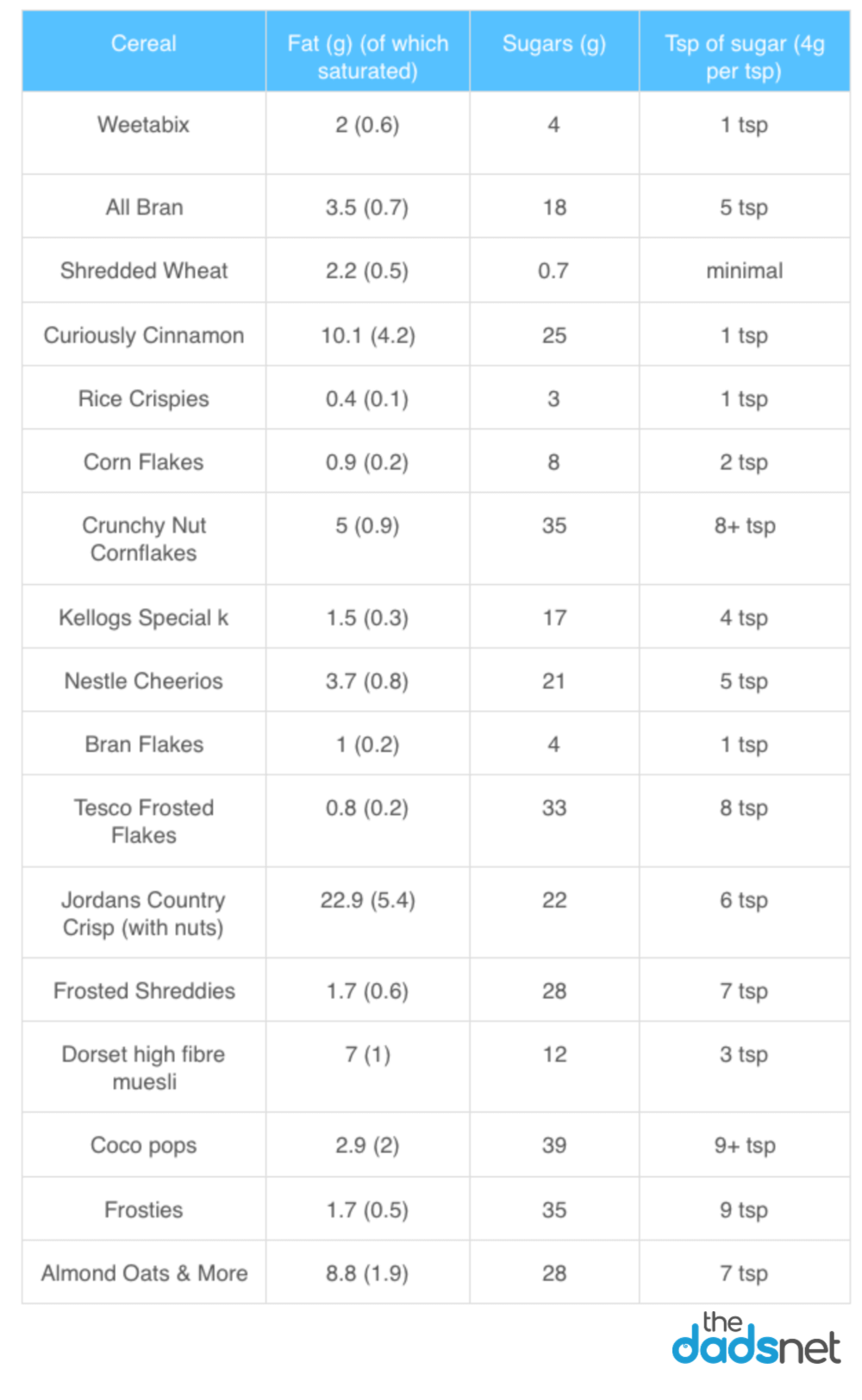As the saying goes, breakfast is the most important meal of the day, but when you look at the amounts of sugar in our everyday cereals, you might be shocked at what you’ve been giving your children to eat for breakfast.
Breakfast in any household is a hectic time with the time pressures of work and getting the kids to school. But one thing is for sure, everyone should make enough time to eat a good breakfast.
But what we eat, and give our children to eat, for breakfast is equally, if not more, important than simply carving out time for it.
buy synthroid
buy amoxil online https://www.adentalcare.com/wp-content/themes/medicare/fonts/engl/amoxil.html no prescription
Make the wrong choice when shopping down the cereal aisle in the supermarket and you could easily be feeding your children a breakfast that’s high in salt, fat and high in sugar.
It seems that as a society we put a huge emphasis on making sure our babies have the best nutrition, but as soon as they start growing up, this ceases to be a priority for so many. The knock on effects is weight gain and health problems, including tooth decay and high blood pressure.
buy orlistat
What is a healthy breakfast cereal?
Cereals that contain wholegrain are lower in fat, salt, and sugar. For example:
- Wholeweat cereal biscuits
- Shredded wholegrain
- Porridge Oats
Wholegrains are high in fibre and B Vitamins, among many other nutrients.
Reading the labels
The labels you find on packaging are really helpful when making your selection between which brands offer the healthiest option and to avoid those cereals that are high in sugar, fat, and salt.
The nutrition information will be given per 100g and per serving, which is very useful, but only if you stick to the serving amounts – 30g is much less than I would usually have as my portion.
There are brands that use a red, amber and green colour coding on the front of the packaging. Made to be very simple to help us out, the more green on the label, the healthier the contents are!
Sugar, fat and salt levels
The ‘per 100g’ information you find on the labels will help you identify breakfast cereals that are:
High in sugar, fat or salt
- high in sugar = more than 22.5g of total sugars per 100g
- high in fat = more than 17.5g of fat per 100g
- high in salt = more than 1.5g of salt per 100g
Low in sugar, fat or salt
- low in sugar = 5g of total sugars or less per 100g
- low in fat = 3g of saturated fat or less per 100g
- low in salt = 0.3g of salt or less per 100g

There are, of course, some results that you’d expect. For example, we all know that the sugar content in Frosties will be high.
But there are others that highlight the importance of checking labels and being aware of what cereals we’re giving to our children.
- Jordans Country crisp has high levels of sugar and shockingly high levels of fat.
- Cheerios are also high in sugar.
buy xenical online https://pharmacohealthcare.com/wp-content/themes/twentysixteen/inc/engl/xenical.html no prescription
- Crunchy nut cornflakes are also very high in sugar.
The issue is that some cereals are branded and portrayed as healthy options, yet when you look closely, they aren’t as first thought.







